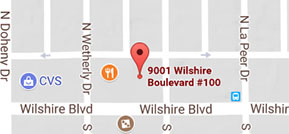Oculoplastic Procedures
Blepharoplasty
Eyelid surgery, or blepharoplasty, is a surgical procedure to improve the appearance of the eyelids.
Surgery can be performed on either the upper and lower lids, or both.
Whether you want to improve your appearance or are experiencing functional problems with your eyelids, eyelid surgery can rejuvenate the area surrounding your eyes.
Specifically, eyelid surgery can treat:
- Loose or sagging skin that creates folds or disturbs the natural contour of the upper eyelid, sometimes impairing vision
- Excess fatty deposits that appear as puffiness in the eyelids
- Bags under the eyes
- Drooping lower eyelids that reveal white below the iris
- Excess skin and fine wrinkles of the lower eyelid
Ptosis Repair
Ptosis is the medical term for drooping of the upper eyelid(s). This lowering of the upper eyelid margin may cause a reduction in the field of vision when the eyelid either partially or completely obstructs the pupil. Patients with ptosis often have20difficulty keeping their eyelids open. To compensate, they will often arch their eyebrows in an effort to raise the drooping eyelids. In severe cases, people with ptosis may need to lift their eyelids with their fingers in order to see. Children with ptosis may develop amblyopia (“lazy eye”) or developmental delay from limitation of their vision.
Ptosis can be corrected surgically and usually involves tightening the levator muscle to elevate the eyelid. In severe ptosis, when the levator muscle is extremely weak, a “sling” operation may be performed, enabling the forehead muscles to elevate the eyelid(s). Other types of repair may include surgery on the muscle on the inside of the lid in cases of small amounts of ptosis. The surgeon will perform testing determine the best form of correction for the individual patient. The goal is to elevate the eyelid to permit a full field of vision and to achieve symmetry with the opposite upper eyelid.
Entropian Repair
Entropion is a condition in which the eyelid is rolled inward toward the eye. It can occur as a result of advancing age and weakening of certain eyelid muscles. Entropion may also occur as a result of trauma, scarring, or previous surgeries. Entropion may also occur in children. This is discussed in more detail in the pediatric section.
A turned in eyelid rubs against the eye, making it red, irritated, painful, and sensitive to light and wind. If it is not treated the condition can lead to excessive tearing, mucous discharge and scratching or scarring of the cornea. A chronically turned in eyelid can result in acute sensitivity to light and may lead to eye infections, corneal abrasions, or corneal ulcers. If Entropion exists, it is important to have a doctor repair the condition before permanent damage to the eye occurs.
There are a number of surgical techniques for successfully treating Entropion. The most common surgical treatment involves tightening of the eyelid and its attachments to restore the lid to its normal position. The surgery to repair Entropion is usually performed as an outpatient procedure under local anesthesia. Patients recovery quickly using an antibiotic ointment for about one week after surgery. Most patients experience immediate resolution of the problem following surgery.
Ectropian Repair
Ectropion means that the lower eyelid is “rolled out” away from the eye, or is sagging away from the eye. The sagging lower eyelid leaves the eye exposed and dry. If Ectropion is not treated, the condition can lead to chronic tearing, eye irritation, redness, pain, a gritty feeling, crusting of the eyelid, mucous discharge, and breakdown of the cornea due to exposure
Generally the condition is the result of tissue relaxation associated with aging, although it may also occur as a result of facial nerve paralysis (due to Bell’s palsy, stroke or other neurologic conditions), trauma, scarring, previous surgeries or skin cancer.
Ectropion can be repaired surgically. Most patients experience immediate resolution of the problem once surgery is completed with little, if any, post-operative discomfort. After your eyelid heals, your eye will feel comfortable and be protected from corneal scarring, infection, and loss of vision.




